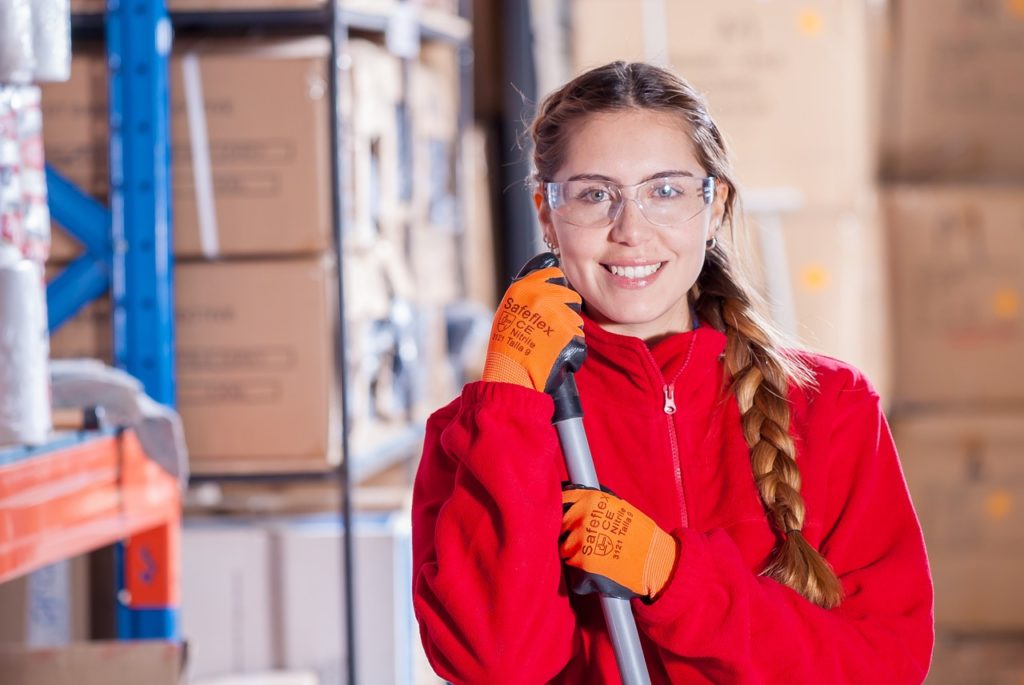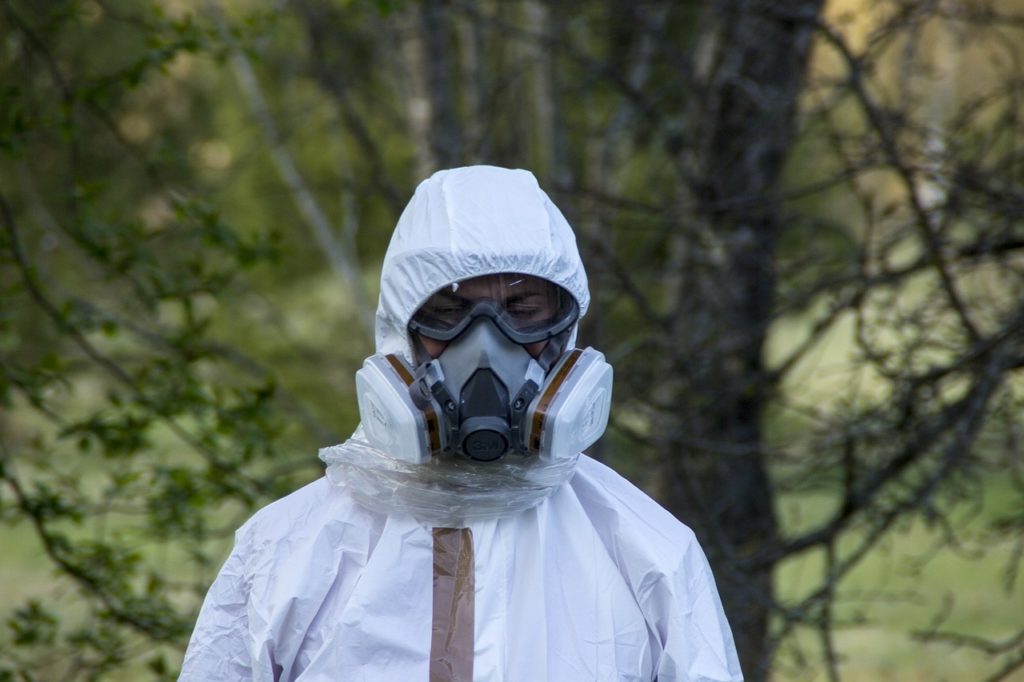Occupational health and safety play a central role in Germany. The basis for this is the “Act on the Implementation of Occupational Safety Measures to Improve the Safety and Health of Employees at Work” (Occupational Safety and Health Act – ArbSchG). This law and the regulations and rules based on it place more obligations on the employer than on the employee.
Cannabis production and occupational safety in Germany


Through cooperative collaboration, it is possible to significantly reduce the risks for employees and to optimize health protection in the company. The industrial production of cannabis is quite new for Germany and it is, therefore, all the more important to consider which preventive measures have to be taken to maintain the health of the employees.
From the point of view of occupational safety, the production of cannabis is subject to the same requirements as all other work. Depending on the work area and task, the spectrum of hazards can be quite broad. Roughly the possible hazards can be divided into the following categories: chemical, physical, biological.
You can find more information about cannabis and other important news in the cannabis sector in the Hemp.im app.
Risk management
Good quality and risk management is not only the basis for more informed decisions but also provides regulators with more reliable data on how professionally a cannabis company, for example, can manage potential risks.
In principle, the employer must ensure that a risk assessment is carried out for each activity. The hierarchy of measures for occupational safety is specified (Technical Rules for Industrial Safety TRBS 1111) and consists of the following levels. S-T-O-P: Substitution: Substituting, i.e. replacing or defusing sources of danger until no source of danger is present. Hazardous substances e.g. by non-hazardous substances and high voltage technology by low voltage technology.


Technical and organizational measures
Technical measures: Avoid danger e.g. by changing the working procedure or separating workers and danger by encapsulating dangerous machines. Organizational measures: Limiting the exposure time of the worker to the hazardous conditions, e.g. by access control. Personal measures: Personal protective equipment, such as safety shoes, safety gloves, protective goggles, dust masks, etc.
A hazard that cannot be eliminated by substitution (replacement) must be eliminated by a technical solution. If this is also not possible, an organizational solution must be sought. Only if this also does not lead to the goal, personal protective equipment (PPE) is used. The employer must also instruct the employee in the correct use of personal protective equipment.
The risk assessment is the basis for the written operating instructions which explain to the employee (before using the work equipment for the first time and in the event of relevant changes to the work procedure) how the activity is to be carried out safely. For this purpose, an easily understandable color structure has proved to be useful for the documents (although this is not mandatory): blue for work equipment, orange for hazardous substances; green for biological agents and yellow for genetic engineering plants.
If hazardous substances are used, employees must be given free access to the safety data sheets on which the information in the operating instructions for hazardous substances (“orange”) is based.
In principle, employers (or the responsible person) must provide sufficient and appropriate training on occupational safety and health at least once a year or have it provided by competent persons.
It goes without saying that attention must be paid to ergonomics when setting up the workstations. Ergonomics ensures that workplaces and working conditions are well adapted to the characteristics and needs of people. This not only serves the health of the employees, but also protects against the late effects of posture errors and increases performance. Various components such as work equipment, work process, and working environment must be harmonized for an ergonomically healthy workplace.
Selection of possible hazards
Physical hazards can occur in many different forms. Here are a few examples: Radiation. Depending on the type of lighting used in a greenhouse, the sources of danger are not only heat radiation and bright light, but also a broad radiation spectrum from infrared to ultraviolet. Not only the eyes must be protected from UV radiation (risk of corneal inflammation), but also the skin (risk of skin cancer).


Headgear. Depending on how the lamps are mounted, it may also be necessary to wear head protection to avoid injury from bumping into them. Protective gloves. The use of protective gloves may be particularly advisable when handling plants (working in damp environments), fertilizers, pesticides and cleaning agents. Just as when handling sharp objects (knives and scissors), the hazard analyses and operating instructions must specify which type of protective gloves is to be used.
Skin products. To prevent skin damage, suitable skin protection products must be selected and provided. A skin protection plan must be drawn up for proper use (in terms of skin cleansing, skin protection, and skincare). Foot protection. Stumbling, slipping and falling are the most common occupational accidents. Therefore, appropriate foot protection is necessary on damp floors.
Good Manufacturing Practice (GMP)
GMP (Good Manufacturing Practice) refers to guidelines for quality assurance of the processes and environment in the production of pharmaceuticals and foodstuffs. The guidelines of Good Manufacturing Practice are intended to ensure that the quality of the products is right – at all times. Especially for employees who come into contact with the products, it must be ensured that they do not contaminate the products.
Occupational health and safety here does not only concern the employees but should also protect the products from possible contamination. The keyword here is personal protective equipment (PPE), which is mandatory in all companies in the pharmaceutical industry. Each work step must be qualified and validated before production begins and is documented in the most precise manner during production. It is important to have even the smallest change approved by the responsible authority before use. Of course, changes in the equipment are also necessary.
The various extraction processes with the associated work safety precautions (fire and explosion protection) are intentionally not mentioned here due to the scope. The risk matrix is helpful for the classifications in the hazard analysis. It represents a risk as the combination of the probability of occurrence of damage and the extent of this damage.
__
(Featured image by Melinda Gimpel via Unsplash)
DISCLAIMER: This article was written by a third party contributor and does not reflect the opinion of Hemp.im, its management, staff or its associates. Please review our disclaimer for more information.
This article may include forward-looking statements. These forward-looking statements generally are identified by the words “believe,” “project,” “estimate,” “become,” “plan,” “will,” and similar expressions. These forward-looking statements involve known and unknown risks as well as uncertainties, including those discussed in the following cautionary statements and elsewhere in this article and on this site. Although the Company may believe that its expectations are based on reasonable assumptions, the actual results that the Company may achieve may differ materially from any forward-looking statements, which reflect the opinions of the management of the Company only as of the date hereof. Additionally, please make sure to read these important disclosures.
First published in HANF MAGAZIN, a third-party contributor translated and adapted the article from the original. In case of discrepancy, the original will prevail.
Although we made reasonable efforts to provide accurate translations, some parts may be incorrect. Hemp.im assumes no responsibility for errors, omissions or ambiguities in the translations provided on this website. Any person or entity relying on translated content does so at their own risk. Hemp.im is not responsible for losses caused by such reliance on the accuracy or reliability of translated information. If you wish to report an error or inaccuracy in the translation, we encourage you to contact us.



Comments are closed for this post.